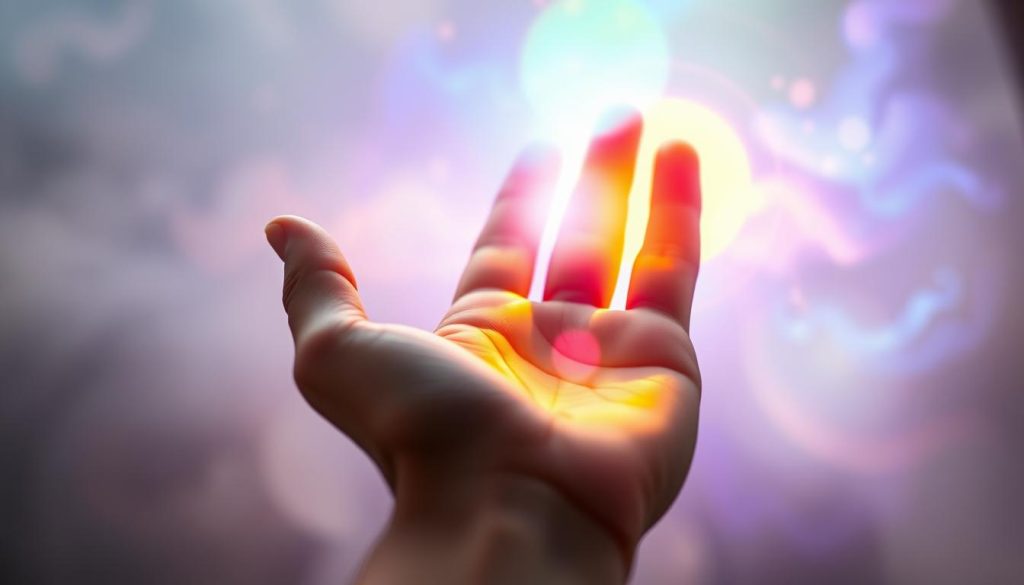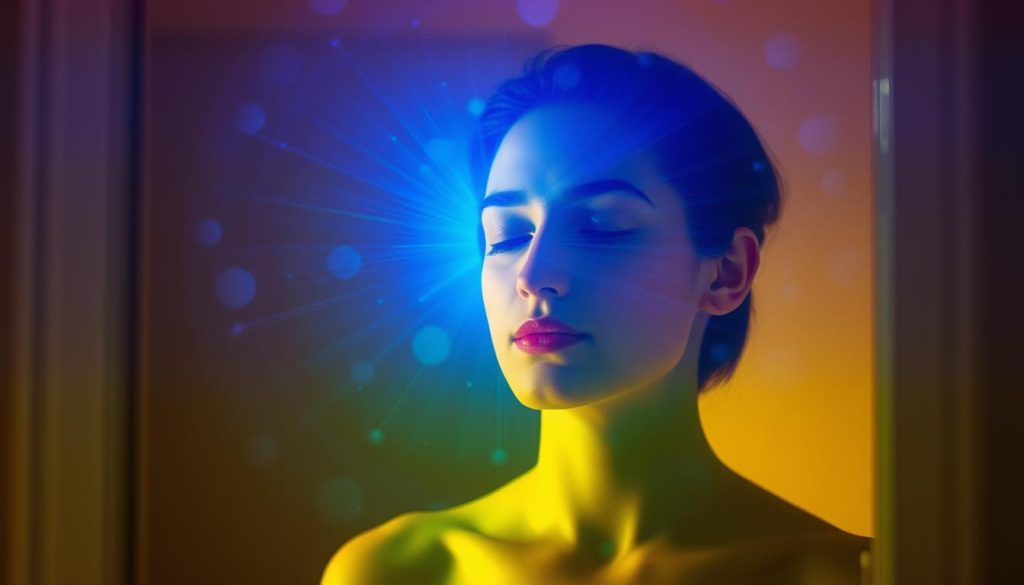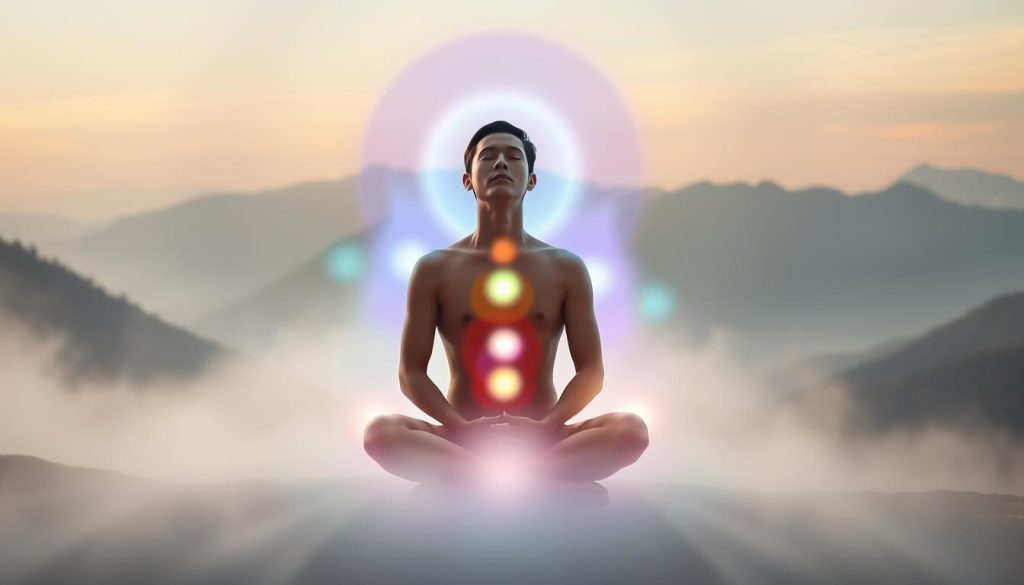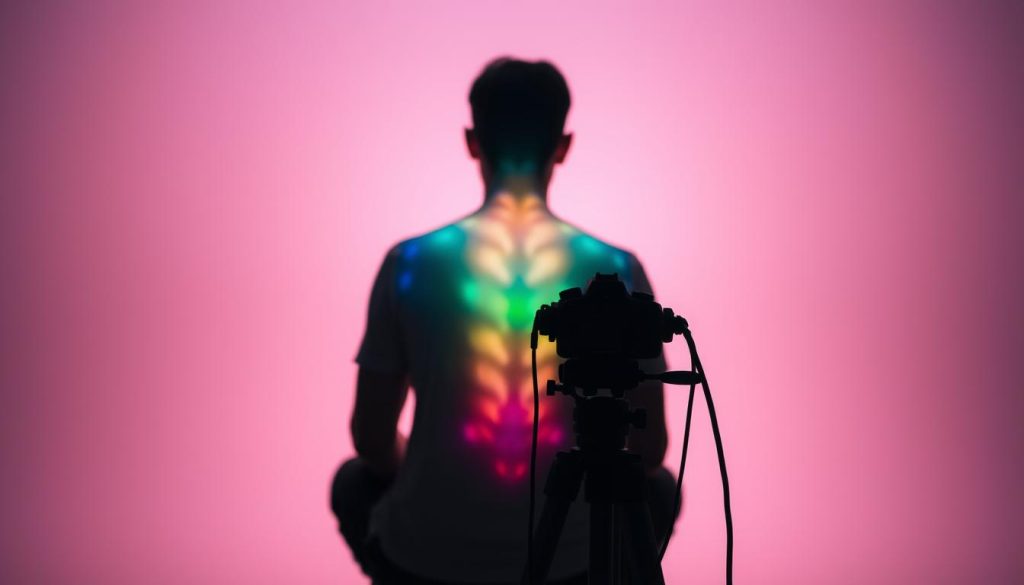Let’s ground together. We’ll explore the subtle field that surrounds the body and how hues tie to mood, traits, and daily life. This is a playful, practical guide for curious people who want clear meaning without fluff.
We’ll show simple ways to notice this glow: soft-gaze tests, mirror work, and modern tools like aura photography and quizzes. Expect easy steps you can try today and brief caveats so experiments feel safe and honest.
Colors map to chakras in a clean, usable way. We’ll decode red to white, plus rainbow blends, and link insights to small actions that support balance and personality growth.
Gentle reminder: this guide invites reflection, not rules. We travel together, keeping consent and care front and center when reading for others.
Why auras matter right now: your energy field at a glance
At a glance, the glow around people can tell a quick story about mental pace and mood. Right now, collective life feels busy, and that bustle shows in fast shifts across the visible aura.
The glow often shifts with mood and nearby emotions. One dominant hue will return again and again, like a steady theme that hints at longer patterns in the body and daily rhythm.
Think of this as inner weather. A quick read can flag stress, calm, or excitement and help us pause, breathe, or move forward with intention.
Interactions matter. Crowds change the energy field, and close connection can tint our glow for a while. Small resets—hydration, breathwork, a short walk—soften spikes and steady that core hue.
Whether you literally see it or simply notice the feeling, the aura often acts as a mindfulness mirror. We’ll use that signal to translate tiny shifts into simple, caring steps.
Quick-start: how this How-To Guide helps you read your aura today
Try these short steps to gently train your sight and attention toward subtle signs. Begin in a calm space. Set a white background in the mirror and soften your gaze just beyond the edge of your body. This simple way makes first noticing easier.
Next, try the hand method. Rub palms together, then separate them slowly. Look for a faint shimmer near the fingers. This quick experience often reveals an early hint of an aura color.
Keep sessions short. Two to five minutes is enough time to avoid strain and still get useful clues. For many people, a playful test or a booked session with aura photography complements practice.
Record notes: a hue, a bright spot, or texture. Don’t force a result. If clarity comes slowly, that’s normal. Over days, patterns carry more meaning than a single glance.

Aura Colors Explained: What Your Energy Field Says About You
Think of the glow as a living palette that hints at mood, habit, and inner drive. This spectrum links small signals to bigger themes, so we can learn useful lessons without labels.
Core hues carry clear meaning. Red points to action and quick movement. Orange shows hands-on learning and creativity. Yellow beams confidence and stage-ready charm.
Green and pink focus the heart—compassion, close bonds, and gentle boundary needs. Blue brings voice and clarity through the throat. Purple and indigo tune intuition and sensitivity.
White often signals higher thought and spiritual connection. Dark patches can hint at fatigue or blocked flow. Rainbow mixes mean busy, energized signals that risk overwhelm if left unchecked.
We link hues to chakra points and small practices so insight turns into steady growth. Track shifts over days. Note patterns in mood, life, and nature. Over time, this practice offers quiet wisdom and a kinder map to feelings.
How to see your own aura: mirror, hand, and soft-gaze methods
Stand relaxed against a white wall and let your eyes drift past the outline of your body. Keep shoulders soft. Breathe slow. This simple set-up helps the subtle glow reveal itself.

Try the mirror method next. Set a neutral background and gaze just beyond your silhouette. Don’t stare at the edge. Let a faint halo or color appear. Two minutes is enough for a first pass.
For the hand method, press a palm to a white surface and relax your vision. Or rub palms together, pull them slowly apart, and notice the thin thread between them. Tiny shifts often show before full hues.
Ground with a short meditation to calm the mind and open intuition. Track what you see: shade, thickness, bright spots, or sensations like warm or cool. Over time the practice becomes a clearer way to read this field.
Celebrate practice, not perfection. Small, repeated experience builds confidence. If color is slow to arrive, note the feeling—your system is still speaking.
How to see other people’s auras without feeling awkward
When we float our focus just beyond a person’s outline, subtle light can appear. Begin with a quick yes. Ask if they want to try. This keeps consent clear and the moment safe.
Choose soft lighting and a neutral wall. Have the other person stand a few feet away. Relax your gaze and hover it around the shoulder and arm line. Don’t fix on the eyes.
Keep the look brief. One to two minutes is plenty the first time. Name observations gently — treat them as invitations, not judgments. Try phrases like “I’m sensing a soft blue edge” and then ask what they feel.
If nothing appears, try again later. Clarity grows with practice and time. For public practice, train with shapes and plants first. That builds confidence and tunes perception without awkwardness.
Remember context: tiredness, bright backgrounds, or stress affect visibility. Use light humor and open communication to make co-discovery fun and respectful.
From sensation to color: using intuition, meditation, and reflection
Start by settling the body; a calm breath opens subtle signals. Sit softly. Breathe slow. Let the nervous system ease.
Begin with a short meditation—three to five minutes. Notice sensations before you look. When we feel first, a hue often follows.

Ask quick questions: What am I feeling? Where in the body do sensations live? Jot a single note. These small recordings turn fleeting impressions into usable wisdom.
Pay attention to buzzing, warmth, or spaciousness. Link those currents to mood and a gentle visual cue. This builds a private lexicon of color and state.
Try a two-step practice: feel first, then soft-gaze. Add music or nature sounds to anchor attention. Later, pause and check if the hue shifted after interaction.
Honor what resonates and release the rest. Over weeks, we deepen connection to inner signals and make clearer, kinder readings of the subtle glow.
Color-by-color meanings: what common aura colors reveal
Below are clear, bite-sized notes on familiar hues and what they often signal. Each line gives a practical meaning to help link sight and inner notes.
Red aura: action, courage, and quick momentum. Ground before racing into new projects.
Orange aura: hands-on creativity and a drive to learn by doing. Move ideas into small steps.
Yellow aura: sunny confidence and clarity. Align goals with values to keep the light steady.
Green aura: heart-centered compassion and healing. Boundaries help support giving to others.
Blue aura: clear expression and insight. Speak gently and often for connection and healing.
Purple and indigo: deep intuition and sensitivity. Rest after social time to avoid overwhelm.
White aura: spiritual attunement and quick processing. Soften perfectionist edges with play.
Dark patches can mark fatigue; prioritize sleep, hydration, and nature to restore balance. Rainbow blends feel exhilarating—plan pauses so life and energy stay healthy.
Note: These are starting points. Personality and context shape subtle nuance, so we treat each read as an invitation to kinder self-knowledge and practical healing.
Chakras and aura colors: mapping energy centers to meanings
The body’s centers act like signal beacons—each one nudges a certain mood or skill. We map those hubs so sensing becomes practical and playful.
Root chakra (red) anchors safety and steady action. When it shines, the edge near the base looks stable and strong.
Sacral chakra (orange) fuels creativity and sexual vitality. Gentle routines keep this center flowing without overwhelm.
Solar plexus (yellow) guides confidence and direction. Clear choices often brighten the area around the belly.
Heart chakra (green/pink) holds compassion and close connection. Aligned boundaries help emotions stay fluid and kind.
Throat chakra (blue) supports honest speech. Simple communication practices smooth the glow by the neck and shoulders.
Third eye (purple/indigo) sharpens intuition. Quiet time reduces noisy signals and deepens inner sight.
Crown (white) links to spiritual presence. Gratitude and stillness balance expansion with grounded presence.
When one center wobbles, others compensate. We suggest small adjustments so whole-system growth feels gentle and real.
Beyond primaries: shades, tints, and nuanced reads
Tiny differences in tone often hold the most helpful clues about mood and momentum. Pastels can whisper recovery or gentle rest. Jewel tones usually point to focused, active states.
A pale yellow may feel like quiet confidence, while golden yellow signals visible leadership. A rosy root-red can mean warming up, yet a dense crimson may warn of push-hard mode.
Deep indigo often shows sensitivity that needs rest. Lighter purple tends to hint at playful intuition and open curiosity. Sacral-orange moves from peachy exploration to fiery creative output—plan cycles to match the wave.
Edges matter. Fuzzy borders can mean expansion or fatigue. Crisp lines can reflect sharp focus or tension depending on context and chakra proximity.
In short: shades tell stories. Notice how nature, sleep, and food nudge tints. Let these small reads guide gentle growth and steadier life choices.
Tools and tests: aura photography, quizzes, and tech caveats
A camera or a short quiz can give a friendly nudge to reflection. Try these tools as playful mirrors. They reveal a moment in an energy field, not a final judgement.

Specialized cameras visualize subtle glows, while online quizzes help name patterns fast. Treat photos and results as snapshots in time. Repeat sessions often show trends better than a single frame.
Note: tech reads use proxies and algorithms. That means outcomes can shift with lighting, mood, and setup. Your inner wisdom and body signals still lead the conversation.
Look at where color appears in prints—top, sides, or near a chakra spot. Blue near the throat hints at communication work. A white aura band near the crown invites grounding practices alongside expansion.
Share findings with trusted friends for gentle feedback. Use tools to boost curiosity and confidence, not to replace self-trust. Keep it light and consistent; over time these tech-assisted tests fuel clearer reflection and practical growth.
Practical practices: balancing, healing, and protecting your aura
Short, daily habits can refresh tired zones and invite calm growth. Start with a two- to five-minute breath-led meditation. Deep breaths soften sharp edges and bring quick balance.
Take nature breaks often. Sunlight, trees, or water gently restore energy and brighten mood. Little outdoor pauses shift life rhythms more than we expect.
For heart chakra themes, pair compassion with clear boundaries. A loving “yes” or “no” protects balance and supports healthy connection.
If dark patches appear, prioritize sleep, hydration, and simple meals. These basic steps promote steady healing and lift the field.
Try a short color journaling habit: note aura color, emotions, and one supportive action. Over weeks, this tiny record maps real growth.
Move creativity through the body—doodle, sing, or stretch. After heavy social time, schedule quiet for gentle reconnection. Hum or read aloud when voice feels tight.
Protective practice: visualize a soft bubble in a comforting hue and refresh it during transitions. Build a small tool kit—stones, scents, playlists—that fits your routine and keeps rituals joyful.
Reading auras ethically: consent, “aura farming,” and real connection
Begin each glance with an invitation — a simple ask keeps trust intact. We always request permission before noticing another person’s glow. This protects boundaries and opens calm communication.
Share observations as gentle possibilities. Frame notes as options, not facts. Let others confirm or correct what lands. This keeps connection honest and kind.
Watch for “aura farming.” Performing a curated vibe for show can feel empty. It replaces real meaning with a public mask. Naming this helps us stay authentic and linked to the heart of the practice.
Never label personality from one quick look. Life context shapes what shows up. Pause when feelings run high and return later. That respect steadies readings and relationships.
Keep personal details private. Don’t publicize another person’s subtle notes. Make room for different beliefs; not everyone accepts these ideas and that’s okay. Compassion matters more than agreement.
A simple rule: reflect what you observe, add one small supportive suggestion, then let others lead. Ethical work turns glimpses into bridges, not barriers.
Bringing it all together: make your energy your guide
Bring it home with a few steady habits that keep insight practical. Keep a weekly check‑in. Walk in nature. Write one short reflection page.
,
Notice a dominant hue and let it nudge plans without forcing identity. A red aura can push action; a blue aura invites clear speech; a yellow aura brightens confidence. Rainbow bursts are lively—add micro‑pauses to avoid burnout.
Track small shifts across life chapters. Over weeks, patterns reveal gentle meaning and steady growth. Share reflections with trusted people to deepen connection and widen perspective.
Simple rule: listen, breathe, set kind boundaries, and return to nature when needed. Let this practice guide daily choices with warmth and practical wisdom.
